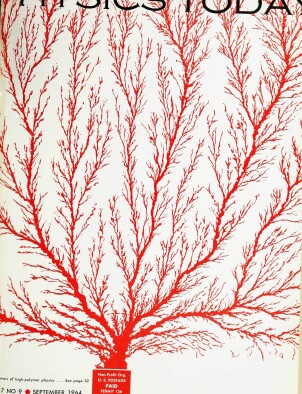Education and manpower in physics
DOI: 10.1063/1.3051801
The data in this report show trends in the number of people studying physics in high schools, undergraduate colleges, and graduate schools and show the relationship between degree production and the increase in professional physics manpower.
This article is only available in PDF format
References
1. The data in this report were collected as part of a larger study of physics manpower conducted in the Department of Education and Manpower at the American Institute of Physics and supported by a grant from the National Science Foundation. A detailed summary of this study appears in Physics Education, Employment, and Financial Support: A Statistical Handbook, 1964, AIP Pub. No. R‐161, May 1964, $3.50. This report summarizes some of the data in Part I of the handbook.
2. The USOE reported an additional 71 000 physics students enrolled in nonpublic high schools in 1961–62.
3. K. E. Brown and E. S. Obourn, Offerings and Enrollments in Science and Mathematics in Public High Schools, 1958 (OE 29021; Washington, D.C.: US Government Printing Office, 1961).
4. Secondary School Science and Mathematics Teachers: Characteristics and Service Loads (NSF 63‐10, Washington, D.C.: US Government Printing Office) p. 8.
5. Wallace R. Brode, “The Growth of Science and a National Science Program”, American Scientist, March 1962, p. 6.
6. The comparison of physics degrees with that of all US male bachelor’s degrees is appropriate since over 95% of the physics degrees go to men.
7. The USOE has predicted recently that 8714 physics bachelor’s degrees will be granted to men in 1969–70. This increase would be about proportional to that projected for all male bachelor’s degrees.
8. The master’s ratios for the past seven years, beginning with the most recent, are: 0.32, 0.38, 0.37, 0.35, 0.38, 0.38, 0.33. The doctorate ratios for the past five years are: 0.23, 0.23, 0.24, 0.22, 0.20.
9. Howard V. Stambler, “Scientists and Engineers, 1960–70: Supply and Demand”, Monthly Labor Review, November 1963, p. 1276.
10. Ibid. p. 1282.
More about the Authors
Fred Boercker. Georgetown College, Kentucky.




